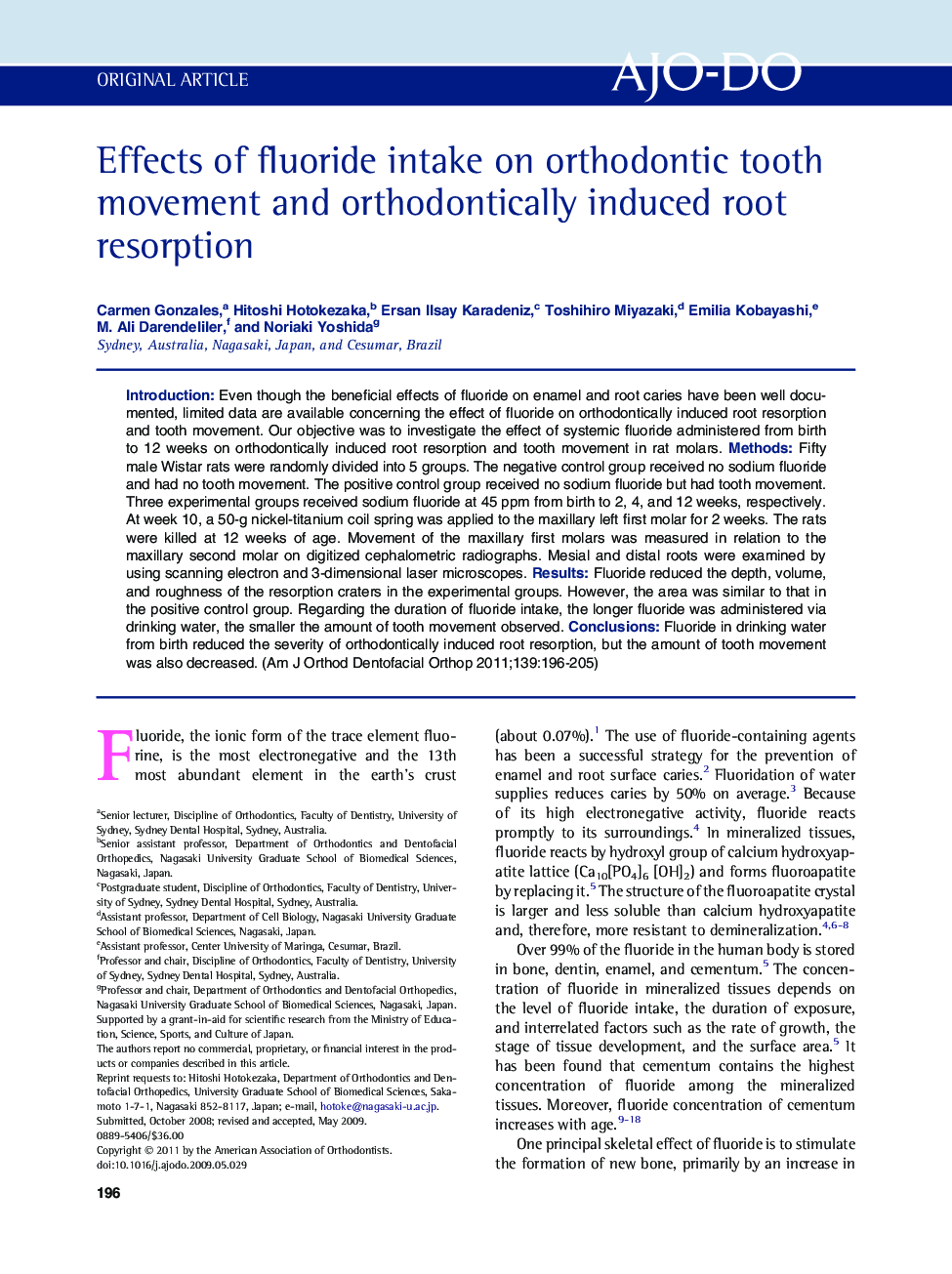| Article ID | Journal | Published Year | Pages | File Type |
|---|---|---|---|---|
| 3117802 | American Journal of Orthodontics and Dentofacial Orthopedics | 2011 | 10 Pages |
IntroductionEven though the beneficial effects of fluoride on enamel and root caries have been well documented, limited data are available concerning the effect of fluoride on orthodontically induced root resorption and tooth movement. Our objective was to investigate the effect of systemic fluoride administered from birth to 12 weeks on orthodontically induced root resorption and tooth movement in rat molars.MethodsFifty male Wistar rats were randomly divided into 5 groups. The negative control group received no sodium fluoride and had no tooth movement. The positive control group received no sodium fluoride but had tooth movement. Three experimental groups received sodium fluoride at 45 ppm from birth to 2, 4, and 12 weeks, respectively. At week 10, a 50-g nickel-titanium coil spring was applied to the maxillary left first molar for 2 weeks. The rats were killed at 12 weeks of age. Movement of the maxillary first molars was measured in relation to the maxillary second molar on digitized cephalometric radiographs. Mesial and distal roots were examined by using scanning electron and 3-dimensional laser microscopes.ResultsFluoride reduced the depth, volume, and roughness of the resorption craters in the experimental groups. However, the area was similar to that in the positive control group. Regarding the duration of fluoride intake, the longer fluoride was administered via drinking water, the smaller the amount of tooth movement observed.ConclusionsFluoride in drinking water from birth reduced the severity of orthodontically induced root resorption, but the amount of tooth movement was also decreased.
